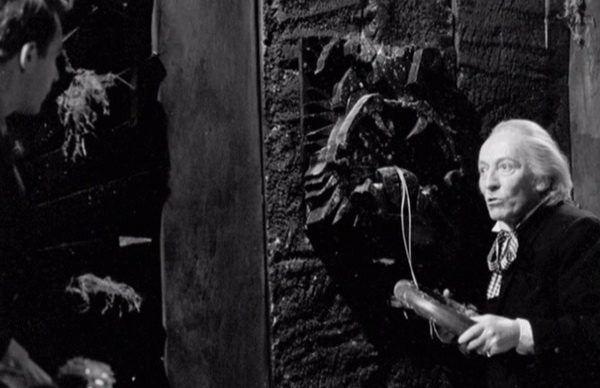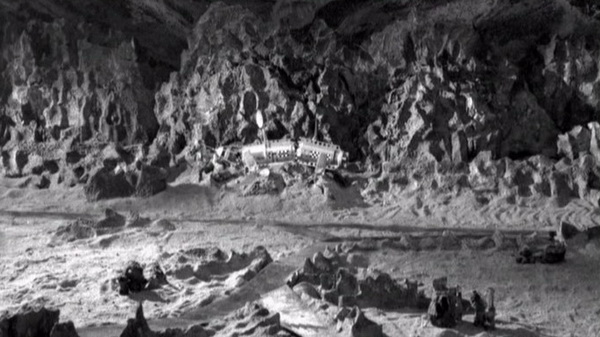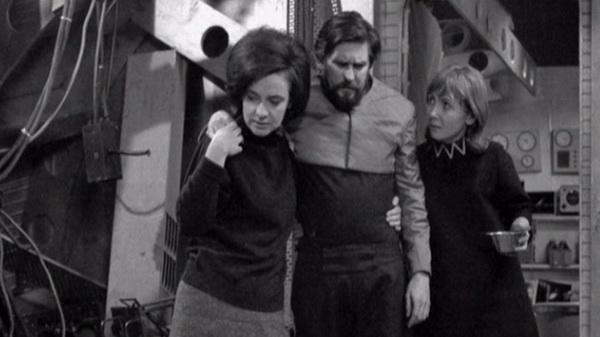|
| ||
|
PRODUCTION CODE L
WRITTEN BY DAVID WHITAKER
DIRECTED BY CHRISTOPHER BARRY
RATINGS 12.5 MILLION
WORKING
TITLE
RECOMMENDED PURCHASE 'THE RESCUE / THE ROMANS' DVD BOX SET (BBCDVD2698) RELEASED IN FEBRUARY 2009.
BLURB
When the tardis lands on dido
at the end of the 25th Century, where the Doctor, barbara and Ian discover
a crashed spaceship waiting for help. |
| |
|
|
| |
|
The Rescue 2ND JANUARY 1965 - 9TH JANUARY 1965 (2 EPISODES)
1. THE POWERFUL ENEMY 2. DESPERATE MEASURES
Following a five-week break after The Dalek Invasion of Earth wrapped, Doctor Who’s second production block made a somewhat uncertain start with this bizarre little two-part story, The Rescue.
I think I’ve seen this serial four times now in all (albeit not as gloriously remastered the first few times), and I’ve never been able to take a firm view on it. At first I dismissed it entirely, but then I later came to find it quite pleasant. All the same, exactly how it managed to endure as Doctor Who’s highest rated serial for fifteen years (it drew an average of 12.5 million viewers across the two episodes) still puzzles the will.
“Do you remember anything about that, Bill? I don’t seem to either.” - Christopher Barry
The DVD release of The Rescue is entirely equal to the serial itself. Toby Hadoke (Moths Ate My Doctor Who Scarf) moderates a commentary featuring William Russell (Ian), Christopher Barry (director), and Raymond Cusick (designer); whilst the Restoration Team have compiled a comprehensive twenty-minute documentary entitled Mounting the Rescue that focuses on both the making of this serial as well as the commencement of Doctor Who’s second production block as a whole.
Above: The renowned William Russell in the Mounting the Rescue documentary
I didn’t get much out of the commentary here. Poor Toby Hadoke had a hell of a job trying to coax the memories of the three contributors, and as they couldn’t recall very much, all they seemed to do was put the boot into the new series’ TARDIS interior; celebrity casting; and all the rest of its accoutrements. One discussion did grab my interest though – I was fascinated by Barry and Cusick’s take on the old ‘monochrome versus colour’ debate. I’ve always maintained that many of Doctor Who’s black and white serials look more impressive than some of the early colour ones (particularly those produced in the early 1970s that were laden with colour separation overlay). For example, if you compare the first episode of the Jon Pertwee serial Invasion of the Dinosaurs (which only exists today in the form of an old monochrome film recording) with the ensuing five colour episodes, you’ll see exactly what I mean - proof certain that black and white forgives a multitude of sins.
“Doctor Who never recovered from not being shot in black and white.” - Douglas Adams
The two episodes of The Rescue themselves are, of course, stunningly presented. And, my ambivalence about its merits notwithstanding, I have to admit that The Rescue does have a lot going for it on paper, not least of which is the then-brand new gimmick of introducing a new companion.
Above: The Radio Times’ feature on the Doctor's first change of companion
In practice it’s another matter, however. It’s difficult to call Vicki ‘new’ with your hand on your heart – heck, when Carole Ann Ford left at the end of The Dalek Invasion of Earth, O’Brien was originally contracted to play ‘Susan.’ And while the name may have eventually changed (after some peculiar options like ‘Tanni’ and ‘Lukki’ had been mooted), Vicki’s character is so similar to her predecessor’s that it’s hard to get excited about her arrival. In fairness, in this one story Vicki is actually portrayed as quite a damaged young woman, beset with grief, but she soon recovers from her ordeal (surprisingly quickly, in fact) and by the next serial has become entrenched as the ‘teenage girl from the future’ that Susan had always been.
Furthermore, from a modern perspective, it’s hard to countenance David Whitaker not fully exploring the effects of Susan’s departure on the TARDIS crew. Obviously a television show has to look forwards, not back, but even so Susan’s departure is barely mentioned; let alone dealt with satisfactorily. To think that this two-parter was the 1960s equivalent of The Runaway Bride beggars’ belief. It’s something of a mercy, then, that Paul Leonard’s 1994 novel Venusian Lullaby redressed the balance somewhat, exploring as it did Susan’s abrupt departure in a much more rewarding manner.
Yet in a sense, the buoyancy of The Rescue is its greatest charm. For instance, there is one lovely scene that I always find particularly amusing where Barbara kills an ostensibly horrific creature, only to later learn that it was Vicki’s pet. Better still though, I find it hilarious (and deeply gratifying, psychologically) that the villain of the piece, Koquillion (or “Kocky-lickin”, to the filthy-minded Ian), is ultimately revealed to be Bennett, a human criminal in disguise. The production team actually had an excuse here for providing a fake-looking monster as, for this one time, it was supposed to be fake. Inspired.
And so at the end of the day, The Rescue does its job well
in introducing Vicki to the series, but, in modern terms, the way in which
Susan’s departure is not dealt with is indefensible. My advice would be
either to enjoy this DVD for exactly what it is - a quaint little two-part
1960s serial, with special features to match - or, if you’re after
something heavier, go and check out Venusian Lullaby instead.
|
||
|
Copyright © E.G. Wolverson 2008, 2009
E.G. Wolverson has asserted his right under the Copyright, Design and Patents Act 1988, to be identified as the author of this work |
||
|
Although you’ll probably think that I’m insane, I much prefer the two gorgeous episodes of The Rescue to the six-part Dalek blockbuster that preceded it. As far as I can see - and I must have seen it about fifteen times - this serial epitomises 1960s Doctor Who, ticking all of the right boxes. The regulars are on top form, the direction is stylish, the writing is crisp and the lightning is magnificent. The latter is especially important as the success of a black and white television programme hangs on the quality of the lighting.
What I really love about David Whitaker’s work is that he never forgets he is writing for a character-based show first, and accordingly he gives his characters as much prominence as the plot. You could be unfair to The Rescue and say that its only purpose is to give Vicki a new home aboard the TARDIS, but that would be doing a great disservice to the actors who ensure that this is a thoroughly charming ride.
Maureen O’Brien as Vicki comes as a real breath of fresh air after the miserable wailings of Susan. With Vicki stranded on an alien planet, her family and friends all dead and her only companion a cripple who is (unbeknownst to her) holding her hostage, The Rescue could be seen as one of the series’ most dramatic introductory vehicles ever. Vicki is written as a scared child, but O’Brien plays up those feelings; the fear of a masked monster, the elation of escape, and the joy of finding some friends at last. Her chemistry with William Hartnell, Jacqueline Hill and William Russell feels natural throughout, and as the story progresses there is never any doubt that she will be joining the crew at its end.
where Hartnell jettisons a lot of his baggage that he bore in the first season, becoming a much gentler, bumbling sort of character. He is deeply effected by the loss of Susan, even to the point where he sleeps through a TARDIS materialisation, and so stumbling across Vicki at this point is fortuitous. I like to think that the TARDIS sensed his feelings and dropped him off somewhere where he could pick up a new stray.
“Well it wasn’t me, point your torch down there!”
Some of my favourite Hartnell scenes are found in this serial - his hilarious comment that he might try and pretend to Ian that he came to the planet Dido deliberately; the business when the sand beast screams and Ian points the torch at him, in response to which he declares “Well it wasn’t me, point your torch down there!”; his touching and very warm scenes with Vicki; and his masterful trouncing of Bennett at the conclusion. Hartnell had really come into his own by this point, and would go on to deliver a collection of his strongest performances throughout the rest of the season.
For their part, Ian and Barbara have been at this game just almost as long as the Doctor has now, and it’s a real joy to watch the seasoned travellers finally freed from having to look after Susan. I love how the Doctor lets them go off and do the exploring for once – what a far cry from An Unearthly Child! What’s more, Ian and the Doctor hadn’t been paired up since The Sensorites, so it’s great to see them working together, even if all they’re doing is shuffling along a ledge! Ian’s little hand shake to suggest that the Doctor is going doddery makes me chuckle every time.
The Rescue’s production values are top notch, for the most part because it keeps things simple. Christopher Barry’s direction never fails to impress me; I love that creepy sweep towards the TARDIS as the travellers first emerge into the smoke-swept shadows. The model shot of the crashed spaceship is a million miles away from the tacky Dalek saucer of the previous serial, and the sand beast is all the better for having somebody inside it crawling along. Sandy would eat the Slyther for lunch!
The lightning creates a fantastic mood here; just look at the domestic glow of the TARDIS console room, the menacing shadows of the catacombs (the Vashta Nerada would have a field day on Dido!) and the gloriously staged climax in the people’s hall of judgement. The Doctor’s condemnation of Bennett (“You’re insane!”) still gives me chills today, particularly as the scene is lit so beautifully, so as to reveal the dust of the ages sweeping across the set.
I refuse to criticise the idea of a whodunit with only one possible
culprit, simply because I don’t really see this story as a whodunit - it’s
actually a gentle character based story with some dark stuff going on.
Ultimately The Rescue is a string of warming character scenes
brought to life by a fabulous ensemble cast. The wonderfully relaxed
chemistry between Hartnell, Russell and Hill suggests characters who love
travelling together, and actors who love acting together. Surgically
stitched to The Romans, here begins six episodes of pure bliss.
|
||
|
Copyright © Joe Ford 2010
Joe Ford has asserted his right under the Copyright, Design and Patents Act 1988, to be identified as the author of this work. |
||
|
Unless otherwise stated, all images on this site are copyrighted to the BBC and are used solely for promotional purposes. ‘Doctor Who’ is copyright © by the BBC. No copyright infringement is intended. |
||

.jpg)
.jpg)
.jpg)
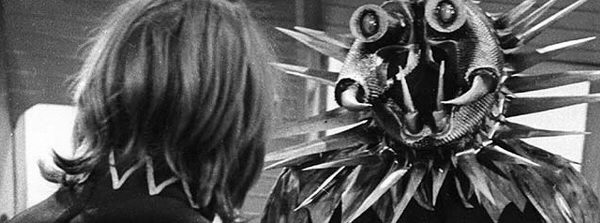
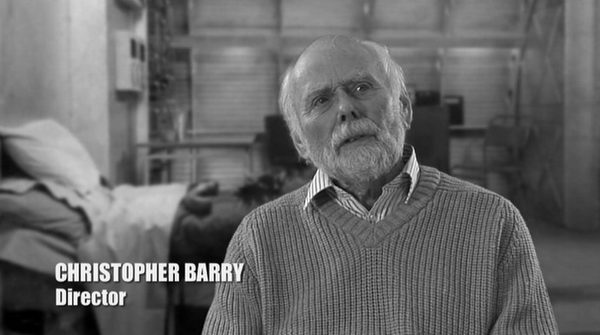
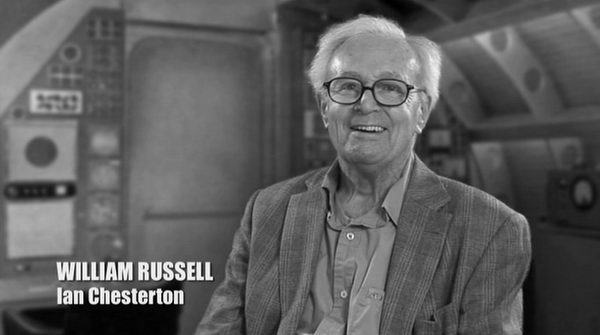
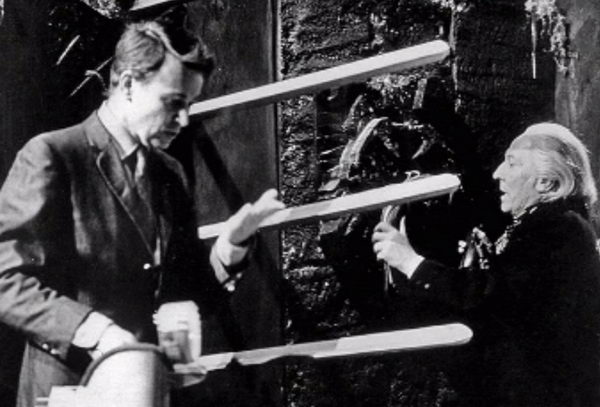
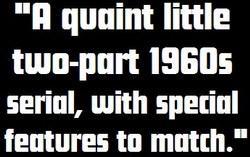
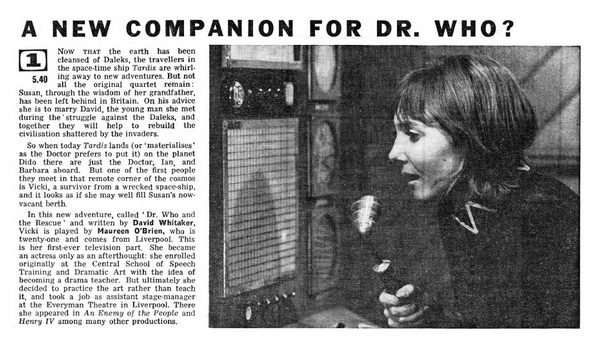
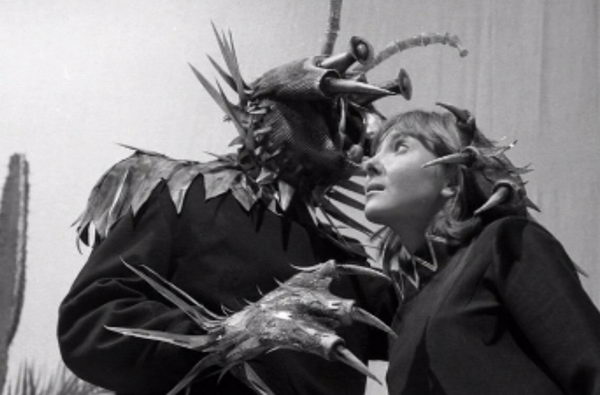
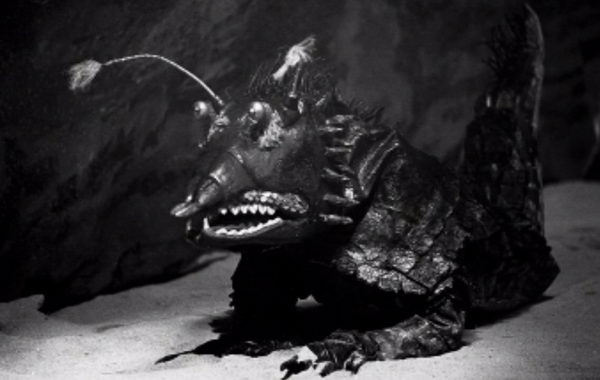
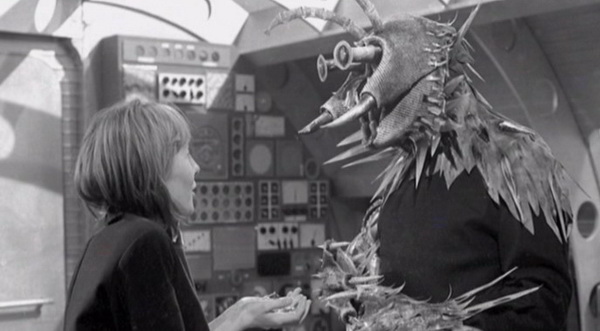
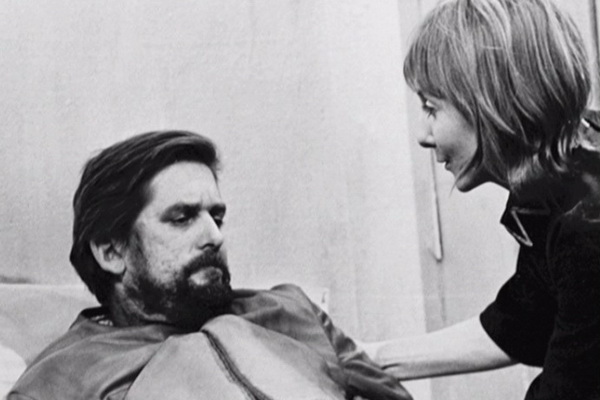
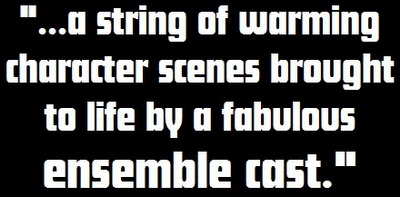 The
Rescue
The
Rescue